Top Causes and Solutions of Monitor’s NO SIGNAL
If your PC monitor fails to appear or displays “no signal,” you’ll be frustrated. Poor contact between the power cable and the video cable (HDMI cable), charging, and settings are all possible culprits. In this article, we go over the causes and solutions for not being able to see the computer monitor.
The Reasons of PC’s Monitor Does not Appear
Have you ever used a computer and noticed that “the monitor went dark,” “the power was turned on but only the PC monitor was visible,” or “no signal was displayed”? You may be concerned that it has failed if you don’t know the cause.
There are several reasons why the computer display may not show, and it is not always a technical issue. It might be as simple as turning off the power switch or unplugging the power cord or video cable (such as an HDMI cable).
In this post, we’ll go through the causes and solutions for several circumstances where the computer monitor won’t turn on. Consider asking for repairs from an expert, depending on the origin of the problem.
No Signal ? What is the cause when the PC monitor does not appear?
The disappearance of the PC monitor can be caused by a variety of factors, including component failure, charging, and PC settings. There might be a problem inside the PC if the power switch or cable connection are not the issue.
- Power failure | Possibly caused by the PC itself
- Poor contact or disconnection | Cable may be the cause
- Extra electricity is charged
- Defects due to deterioration of parts
- The sleep function / screen off function is in hibernation.
- [Supplement] How to isolate the cause

1. Power Failure | Possibly caused by the PC itself
Check whether the power switch is turned on and that the power cable is not removed if the monitor abruptly disappears. The power lamp will light up if it is connected properly. If the power is on and the cable is not removed, the power supply may have failed or the PC itself may be malfunctioning.
2. Poor Contact or Disconnection | Cable may be the cause
If the PC monitor’s power is switched on yet “No Signal” appears on the screen, the power cable or video cable (HDMI cable, for example) may have poor contact or be disconnected. Also, if the screen suddenly turns dark after being operational, it’s usually a power cord contact issue.
The same cause might be examined if nothing appears on your own PC’s monitor. Check that each cable is properly attached.
3. Extra Electricity is Charged
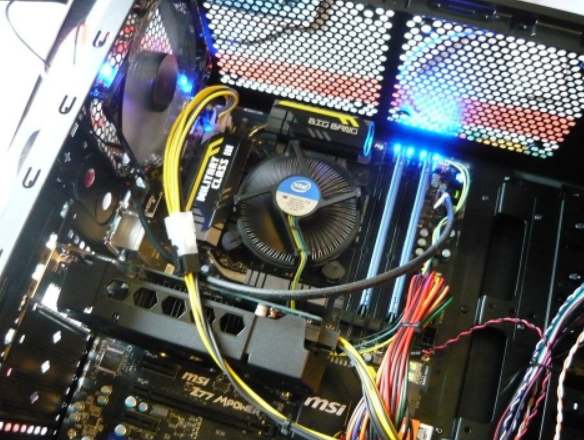
If you continue to use the computer, static electricity will build up within it, resulting in a brief malfunction and the monitor not being visible. Additionally, if too much energy is charged, the screen may become noisy or indicate “No Signal.”
If you haven’t taken care of your computer in a long time, be cautious since charging is likely to occur due to dust and filth collection.
4. Defects Due to Deterioration of Parts
If the PC monitor does not show, it is possible that not only the monitor but also the graphic card and motherboard have been damaged.
- Monitor failure
- Graphic Card failure
- Motherboard failure
- Hard disk failure
1. Monitor failure
If there is no response when you switch on the monitor, or if you do not see anything when you replace the cable, the monitor itself may be defective. If you can see the screen faintly depending on the angle, the monitor backlight may be off.
Since repairing the backlight requires specialized knowledge and skills, it is common to ask a professional contractor for repairs.
2. Graphic Card failure
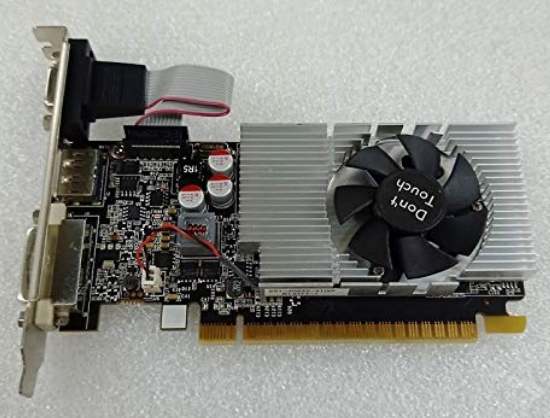
The graphic card has the role of displaying images and videos on the monitor, and if the graphic board breaks down, the monitor will not be displayed. Symptoms include noise, turbulence on the monitor, and slow mouse response . Also, in rare cases, the monitor may not be displayed with HDMI output, but may be displayed with DVI output.
3. Motherboard failure
Failure of the motherboard, which is the foundation of the entire PC, can also cause the monitor to disappear or the power to turn off suddenly . In addition, there is a phenomenon that the power of the PC is repeatedly turned on and off without the monitor being displayed.
Visually check the capacitors on the motherboard, and if deterioration such as liquid leakage or expansion is observed, there is a risk of failure . Also, if an error occurs, you will hear a beeping beep.
4. Hard disk failure
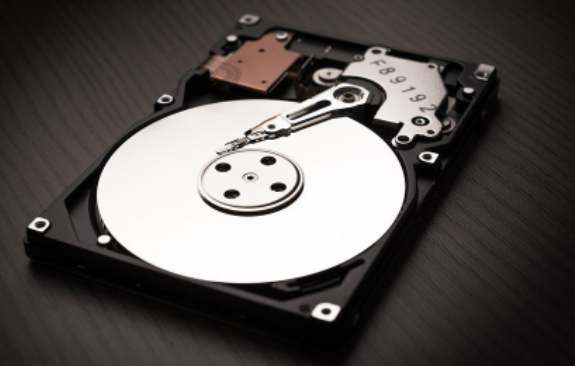
If no signal is displayed on the screen of the PC monitor and the access lamp of the hard disk is lit in total darkness, the hard disk may be defective. Check the access lamp just in case, as it is a problem that can be solved by replacing the hard disk.
5. The sleep function / screen off function is in hibernation.
The monitor may be configured to sleep when it is completely dark. However, if it does not wake up when you push the power button or when you click the mouse, it is in hibernation mode with the sleep and screen off functions turned on.
The procedure for canceling hibernation differs depending on the PC model, so check the manual before performing the operation to cancel it.
6. [Supplement] How to Isolate the Cause
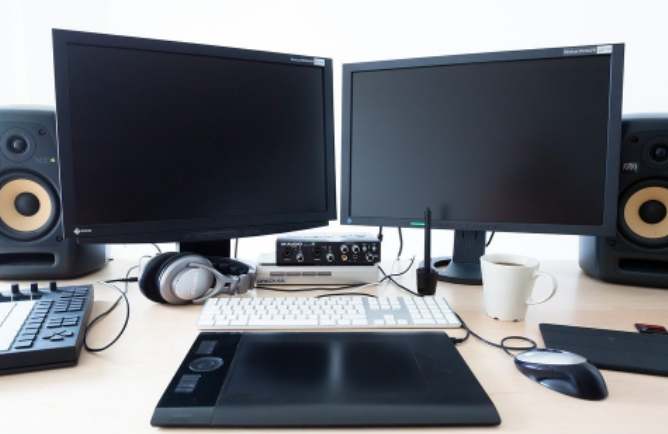
There are two ways to isolate the cause when the PC monitor does not appear.
- Connect your TV or another monitor to your PC with an HDMI cable.
- Connect a PC monitor that does not show up and another normal PC.
If you try the first method and the screen looks normal, the PC monitor itself may be defective. If the PC monitor looks normal with the second method, the PC itself may be out of order.
5 Solutions when the PC monitor does not Appear (No Signal)
Here, we will explain the main measures to be taken when the PC monitor does not appear. Dealing with problems inside your PC can be a hassle, but there are surprisingly many cases where you just accidentally disconnect the cable .
- Check the connection of the power cable, HDMI cable, and outlet
- Turn off the power and discharge
- Reset the BIOS
- Restart your PC
- Replace the graphic board / motherboard
1. Check the connection of the power cable, HDMI cable, and outlet
Check to make sure the monitor and PC’s power and HDMI cables are correctly connected before reviewing the settings inside the PC. Be careful that the AC adapter and power cord for laptop PCs are frequently not correctly connected. The use of a power strip might potentially cause the power supply to become unstable.
You will not be able to start the CPU if you insert the “EPS12V power cable” that gives power to it.
2. Turn off the Power and Discharge
If the PC accumulates too much power, the monitor may not show properly or the operation may become unstable, so it is required to discharge the electricity. We’ll show you how to unplug desktop computers.
How to discharge a desktop PC
Follow the procedure below to discharge the desktop PC.
- Close and terminate running applications.
- Remove all cables and peripherals connected to your PC.
- Leave it for 5 to 10 minutes to discharge.
- After the discharge is completed, connect only the power cable, keyboard, and mouse required to start the PC.
When you’re done so far, turn on your PC and see if it boots.
How to Discharge a Notebook PC
When you discharge your laptop, you also need to remove and install the battery.
- Close and kill all running applications.
- Remove all cables, peripherals, and batteries connected to your PC.
- Leave it for 5 to 10 minutes to discharge.
- After discharging is completed, connect the power cable, keyboard, mouse, and battery.
If you boot your laptop after the discharge and the problem goes away, you know it’s a temporary malfunction.
3. Reset the BIOS
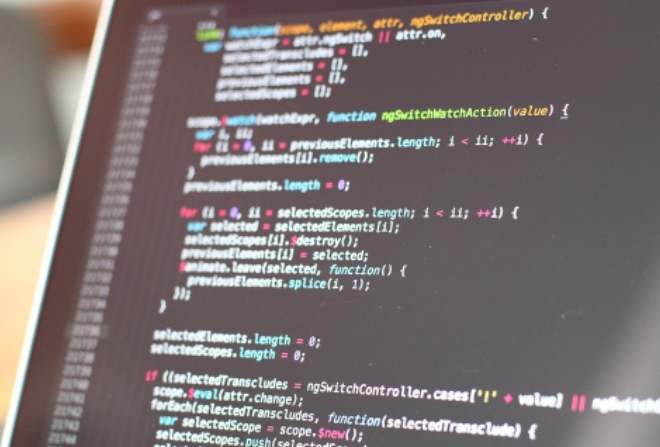
Resetting the fundamental software “BIOS” installed on the motherboard may help to improve the symptom of the display not appearing. Even if nothing is visible on the monitor, you may set the BIOS, but the date and time will be initialized, and you will need to modify it.
Because the BIOS setup screen varies by manufacturer, please reset it while consulting the instructions.
4. Restart Your PC
Rebooting the computer may resolve the temporary issue between the monitor and the computer, allowing the monitor to be displayed. You can simply restart it if it has a shutdown button, but if it doesn’t, press and hold the power button to force a shutdown.
5. Replace the Graphic Card / Motherboard
The graphics card or motherboard may be faulty if the above elements do not display on the monitor. You may be able to solve the problem yourself depending on where it is located in your PC, but not everyone can repair or replace the graphic card or motherboard. It may break down if you make a mistake when removing the pieces.
As a result, if you see any indicators of problems on your graphics card or motherboard, we recommend seeking professional assistance.
Cause & Solution of Suddenly “No Signal” on the PC’s Monitor
If “No Signal” is displayed on the PC monitor, it is possible that the video signal has not reached the monitor . This is caused by input switching deviations and Windows settings, so we will explain how to deal with it.
- Turn the power off and then on again and reconnect the cable
- Is input switching selected correctly?
- Is the laptop an external display?
1. Turn the power off and then on again and reconnect the cable
If the power light on your PC monitor is off, make sure the power cable or HDMI cable is plugged in and then turn the power off and then on again. Next, insert and remove each cable to make sure that the cables are not loose or have poor contact.
If you have a spare video cable or power cable, try replacing the cable to see if it improves.
2. Is input switching selected correctly?
Generally, three types of connectors, “VGA,” “DVI,” and “HDMI,” are used to connect the monitor to the PC. Normally, the video signal is automatically switched, but if the input switching is incorrect, “No Signal” may be displayed.
Also, if you have a built-in terrestrial digital tuner and there are multiple input terminals for your PC, you can switch between digital and analog each time you press the PC button.
3. Is the laptop an external display?
In the case of a notebook PC, if it is set to be displayed on an external display, “No Signal” may appear on the monitor or nothing may be displayed. In this case, check the display settings of the external display.
To check the settings, go to the multi-display field with Settings -> Display, or press “Fn + F3” or “Windows key + P” at the same time to change.
Cause & Solution of PC’s monitor does not appear even though the power is turned on
Just because your PC is on but the monitor doesn’t show up doesn’t mean it’s a malfunction. However, if a fundamental solution cannot be expected, a virus infection is suspected and immediate action is required.
- If the logo is not displayed, discharge → restart
- Follow the instructions to press “F1”
- If the error handling display continues, wait until it finishes.
- If an error code appears on the blue screen, it may need to be initialized.
- Try safe mode
1. If the logo is not displayed, discharge → restart
If the logos such as Asus, HP, Dell or etc. are not displayed after startup, it is presumed that extra electricity is charged in the PC and it is malfunctioning . In that case, discharge it and restart it to see if it works properly.
If the problem persists even after discharging, there may be a problem with the motherboard or CPU . If it’s difficult to handle by yourself, it’s safe to ask a professional vendor to repair it.
2. Follow the instructions to press “F1”
If you are instructed to press “F1” on a pitch-black screen, “Press F1 to Resume”, it may work normally if you follow the instructions. However, it may also appear like this due to deterioration of the part.
Therefore, even if the monitor appears on F1, it is recommended to check once if there are any problems with the parts.
3. If the error handling display continues, wait until it finishes.
If the screen display continues, wait for the error processing to be completed. Because the PC problem was self-repaired, if the procedure was paused in the middle, it would be resumed from the beginning. It may take some time for the mistake to be processed, but if it has been processing for several hours, it is likely out of order. Depending on the scenario, you may consider sending it in for repair.
4. If an error code appears on the blue screen, it may need to be initialized.
If the error code appears in white on a blue screen, it is extremely likely that your hard drive or memory is malfunctioning. In the worst-case scenario, you may become infected with a virus.
The workaround is to initialize the PC, but the data saved by the initialization will be deleted. It is safe to keep a backup of your PC on a regular basis in case of such a situation.
5. Try Safe Mode
If the following approaches fail to alleviate your problems, consider safe mode, which may start up successfully. Safe mode is a mode that analyzes faults on your computer and boots with the bare minimum of features.
Check for suspicious drivers and applications after entering safe mode and uninstall them. Also, make sure your antivirus software is up to date and that you are virus-free.
Cause and Solution of PS4 / PS3 / PS2 do not appear on the PC monitor
As a general rule, PS4, PS3, and PS2 are connected with an HDMI cable, so the cable may have deteriorated after long-term use . Or the HDMI input terminal of the PC monitor may be out of order, so replace the cable or terminal.
If HDCP (copy guard) is enabled on the game console, the screen can only be displayed on a monitor that supports HDCP. In that case, please disable HDCP from the settings.
[Nintendo Switch] may be a mistake in the connection method

When showing the Nintendo Switch screen on a PC monitor, it is commonly assumed that there is no difficulty if HDMI is connected directly. You can display it on the monitor if you connect both devices with HDMI, but you can’t record the game screen or live stream it on a PC.
Furthermore, because the HDMI terminal on the PC is for output, you cannot output to the display even if you connect the Nintendo switch to the PC through HDMI. Connecting with a capture board can fix these problems. Please see the following articles for information on how to pick a switch capture board and suggested products.

